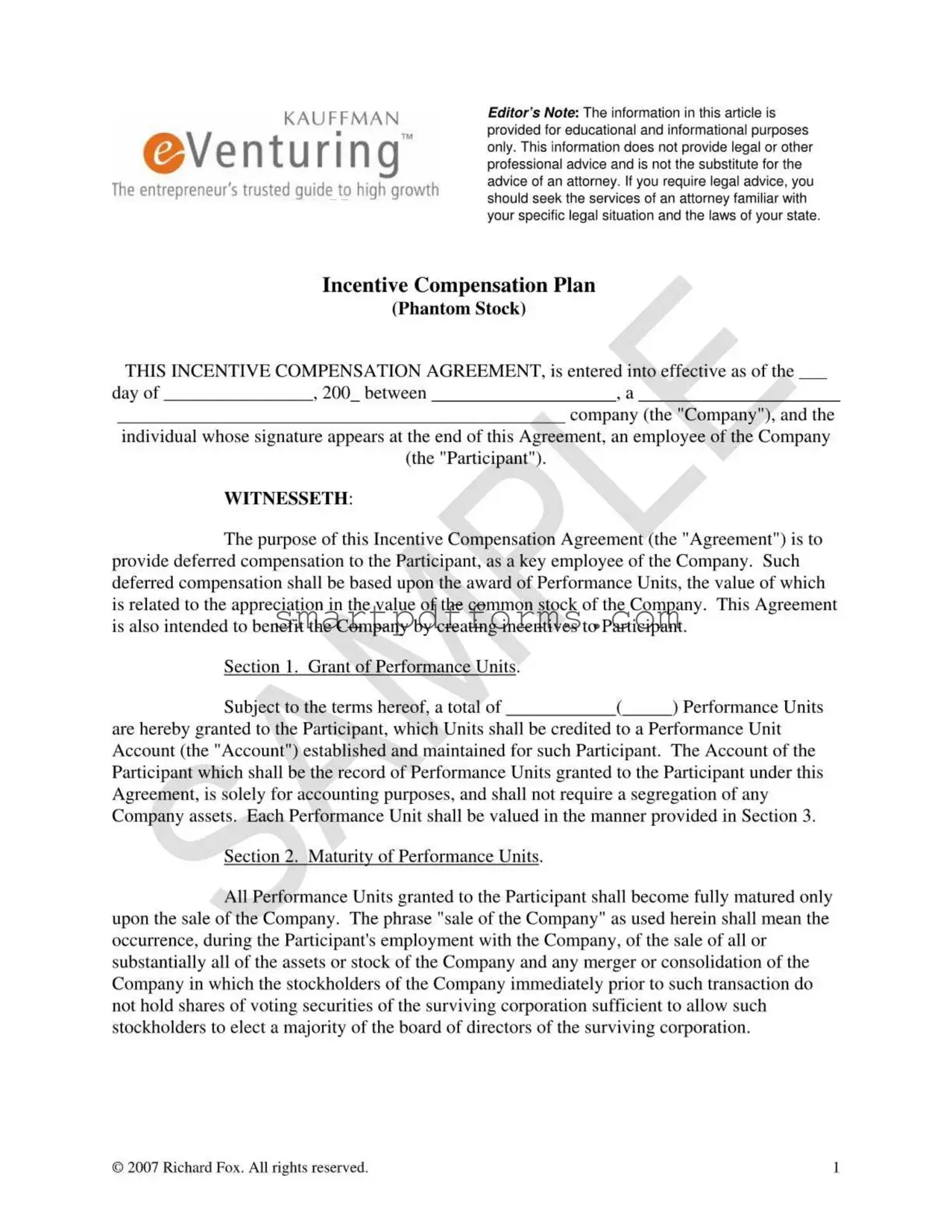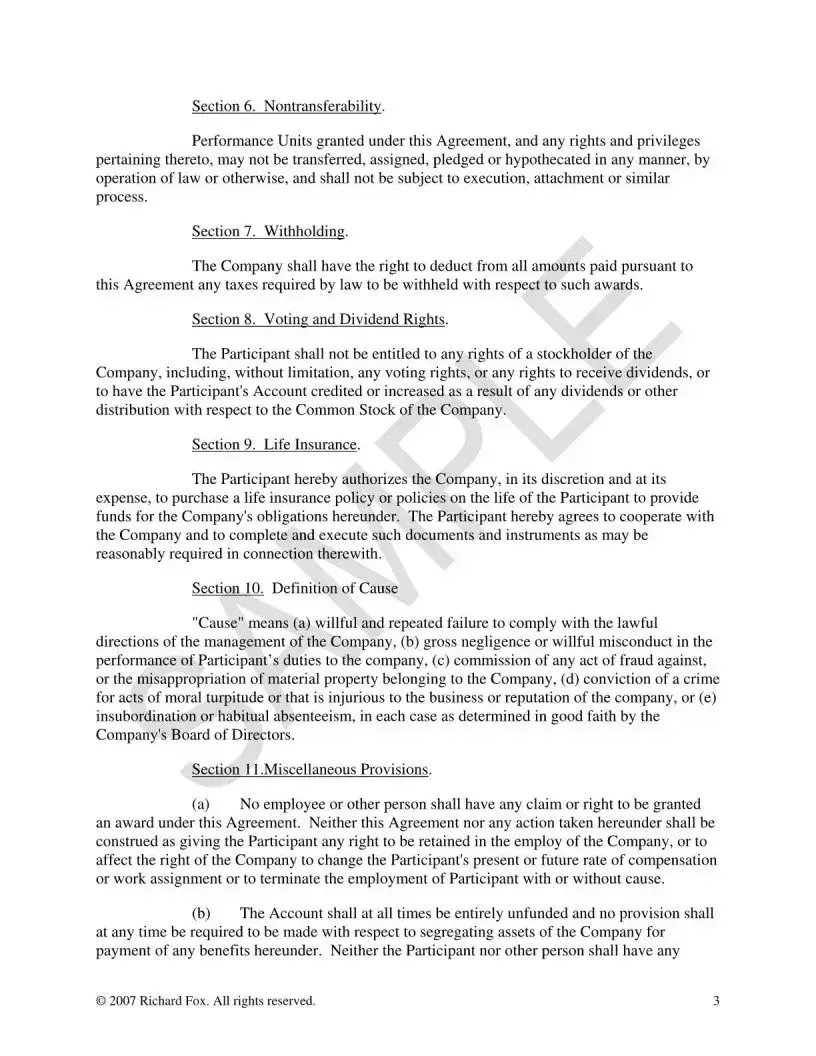The Phantom Compensation Plan, a cornerstone strategy for incentivizing key employees, stands out as a novel approach to aligning the interests of staff with the growth and success of a company. At the heart of this structure is the Incentive Compensation Agreement, meticulously designed to offer deferred compensation based on the rise in value of the company's common stock, without actual equity being granted. By awarding Performance Units that mature upon significant corporate milestones such as a sale, this plan focuses on long-term growth and achievement. This agreement not only aims to benefit the participant, by providing a clear path to compensation based on the company's appreciation but also creates an environment where key employees are motivated to contribute to the company's prosperity. Additionally, the plan outlines conditions for the valuation and payment for these Performance Units, ensuring that participants are compensated in a manner consistent with the gains received by the company or its stock owners. However, it also details specific circumstances under which these benefits may be forfeited, such as termination of employment, underscoring the plan's focus on ongoing contribution and loyalty. Evidently, this Phantom Stock Option Plan embodies a strategic blend of motivation, loyalty, and reward, aiming to propel companies towards achieving unprecedented growth by making their key assets— their employees—partners in success.




